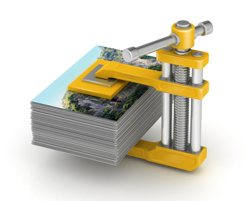IT for Donuts: how to reduce the size of a Microsoft Word file
IT for Donuts: how to reduce the size of a Microsoft Word file
 IT for Donuts is our regular weekly feature where we explain a tech term or answer a question about business IT.
IT for Donuts is our regular weekly feature where we explain a tech term or answer a question about business IT.
This week, see how to reduce the size of Microsoft Word documents containing images.
Images make files larger
If you're working on a Microsoft Word document, you might have notices that the file size increases — often significantly — each time you add an image.
This is because images take up much more space on disk than text. Long documents with lots of images can grow unfeasibly large, making it harder to work with them or to share them with other people.
How to reduce file size
Microsoft Word includes an feature that reduces the amout of storage space images take up. It does this by compressing the image files in a document.
This slightly reduces the quality of images, but you can balance quality vs. size by choosing from a range of compression levels.
You should only compress images once you're sure you don't want to re-crop them or change the size again, because the compression option optimises the image for its current size.
Here's how to do it (these instructions should work with recent versions of Microsoft Word on Windows computers):
- In Microsoft Word, select the picture you want to compress. You can do this by clicking it once.
- Under Picture Tools on the Format tab, select Compress Pictures
- Beneath Target Output, select the resolution you require.
The descriptions in the drop-down will help you understand which resolution is most appropriate. Normally, you'll probably select either Print (if you'll be printing the document) or Screen (if you'll only be viewing it on screen). - To compress all images in the document, make sure Apply only to this picture is unticked.
- Select OK.
That's it. When you save the document again, you should notice that it takes up less space on your computer.




Comments
Add a comment